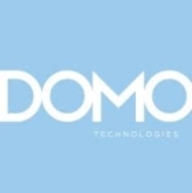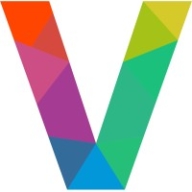

Domo and Visual Layer compete in the analytics and visualization domain. Visual Layer seems to have the upper hand with its advanced capabilities, while Domo appeals with better pricing and support.
Features: Domo offers customizable dashboards, robust data integration, and workflow automation. Visual Layer stands out with cutting-edge analytics, sophisticated visualization, and unparalleled data exploration depth.
Ease of Deployment and Customer Service: Domo's deployment is efficient and clear, supported by comprehensive services. Visual Layer's setup process is intricate, aiming at extensive customization, supported by robust customer service.
Pricing and ROI: Domo has a competitive setup cost with solid initial ROI. Visual Layer incurs a higher setup cost but promises a potential long-term ROI through advanced insights and operations optimization.

| Company Size | Count |
|---|---|
| Small Business | 13 |
| Midsize Enterprise | 10 |
| Large Enterprise | 16 |
Domo is a cloud-based, mobile-first BI platform that helps companies drive more value from their data by helping organizations better integrate, interpret and use data to drive timely decision making and action across the business. The Domo platform enhances existing data warehouse and BI tools and allows users to build custom apps, automate data pipelines, and make data science accessible for anyone through automated insights that can be shared with internal or external stakeholders.
Find more information on The Business Cloud Here.
Visual Layer offers a robust framework equipped to handle complex data visualization needs, providing a seamless integrated platform suitable for a tech-centric audience.
Visual Layer effectively addresses the challenges of data-intensive environments. It merges advanced visual tools with intelligent data processing, enabling users to create meaningful insights from large datasets. This integration is crafted to support informed decision-making processes applicable across a range of industries. With an emphasis on agility, it ensures flexibility and adaptability, catering to the evolving demands of its users.
What are the key features of Visual Layer?Visual Layer sees application across sectors such as finance, healthcare, and manufacturing, where data-driven strategies are pivotal. In finance, it enables real-time analysis of market trends. Healthcare professionals utilize it for patient data management, improving care outcomes. Manufacturing benefits from predictive analytics, optimizing production processes.
We monitor all Data Visualization reviews to prevent fraudulent reviews and keep review quality high. We do not post reviews by company employees or direct competitors. We validate each review for authenticity via cross-reference with LinkedIn, and personal follow-up with the reviewer when necessary.